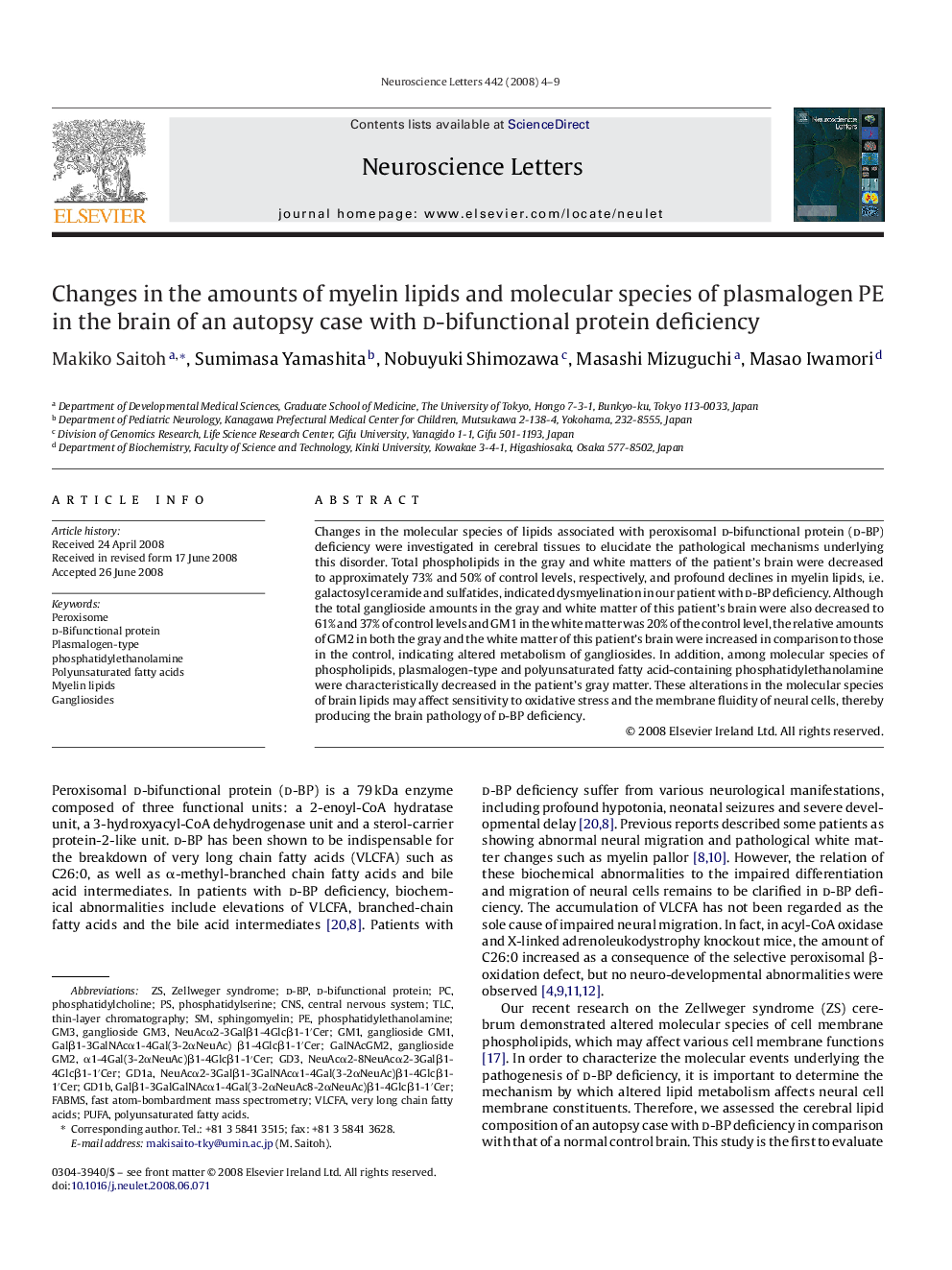| Article ID | Journal | Published Year | Pages | File Type |
|---|---|---|---|---|
| 4348016 | Neuroscience Letters | 2008 | 6 Pages |
Changes in the molecular species of lipids associated with peroxisomal d-bifunctional protein (d-BP) deficiency were investigated in cerebral tissues to elucidate the pathological mechanisms underlying this disorder. Total phospholipids in the gray and white matters of the patient's brain were decreased to approximately 73% and 50% of control levels, respectively, and profound declines in myelin lipids, i.e. galactosyl ceramide and sulfatides, indicated dysmyelination in our patient with d-BP deficiency. Although the total ganglioside amounts in the gray and white matter of this patient's brain were also decreased to 61% and 37% of control levels and GM1 in the white matter was 20% of the control level, the relative amounts of GM2 in both the gray and the white matter of this patient's brain were increased in comparison to those in the control, indicating altered metabolism of gangliosides. In addition, among molecular species of phospholipids, plasmalogen-type and polyunsaturated fatty acid-containing phosphatidylethanolamine were characteristically decreased in the patient's gray matter. These alterations in the molecular species of brain lipids may affect sensitivity to oxidative stress and the membrane fluidity of neural cells, thereby producing the brain pathology of d-BP deficiency.
